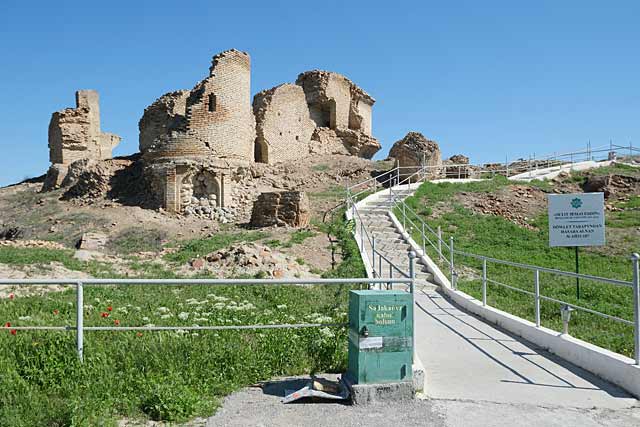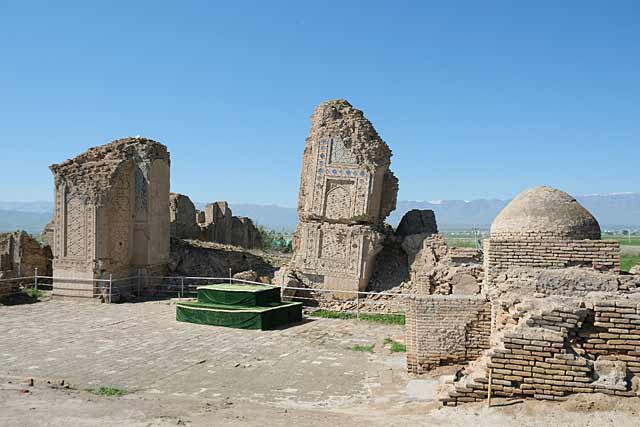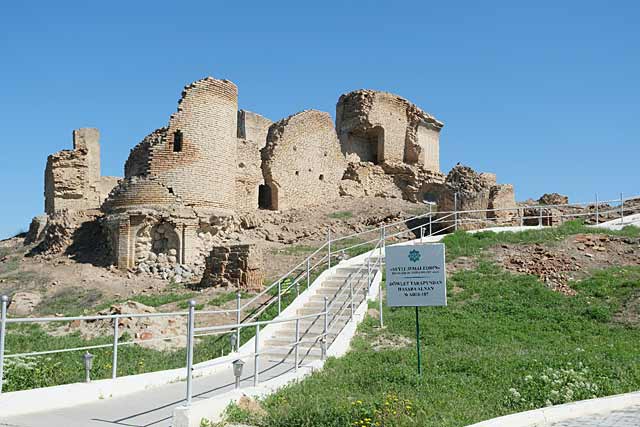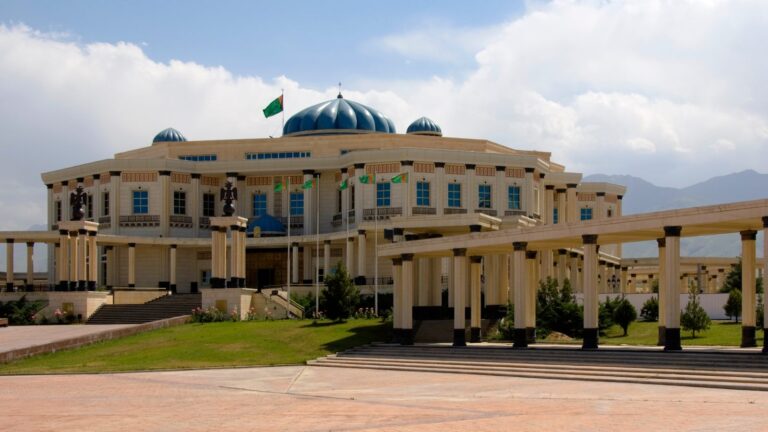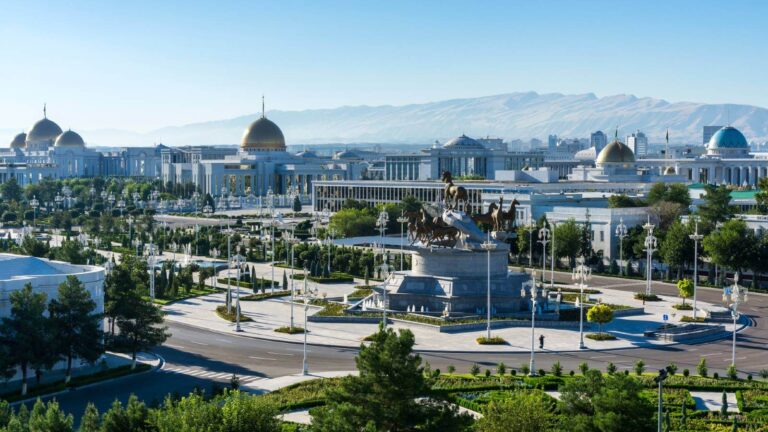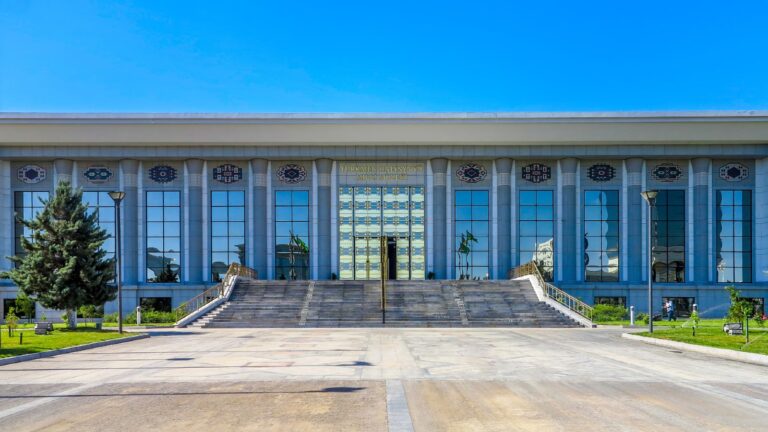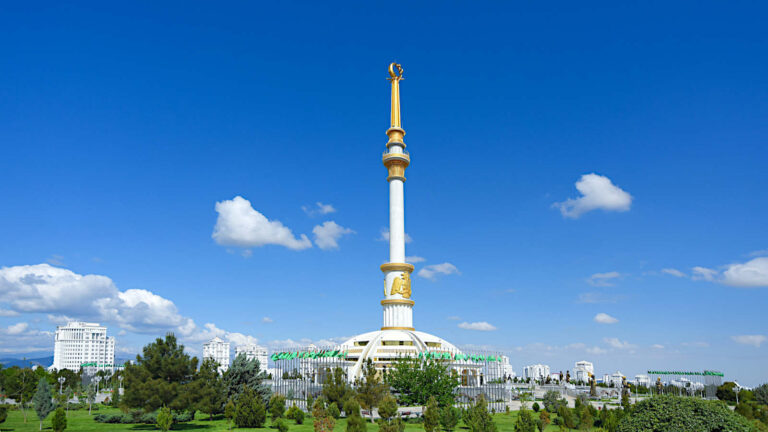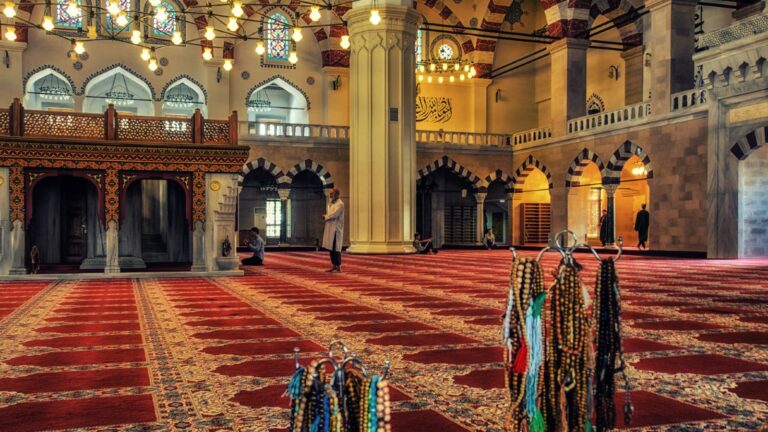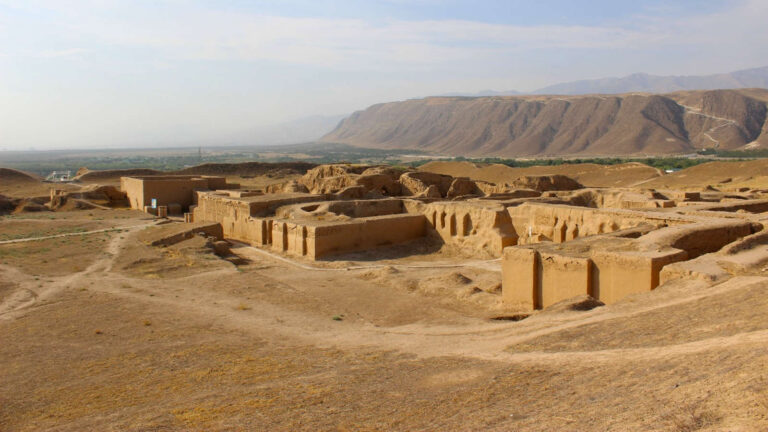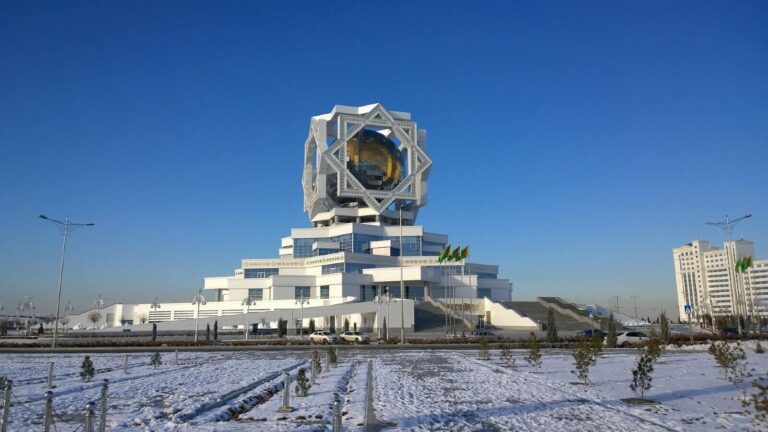Getting There
Located in the village of Anau, 12 km east of Ashgabat along the Ashgabat-Mary highway. The mosque can be reached either by taxi or by public transport.
What to Expect
The Seyit-Jemallidin Mosque is a complex structure that once included a mosque, madrasah and the mausoleum of Sheikh Jemal ad-Din.
The mosque was a domed building surrounded by premises for various purposes. The entrance on the north side was decorated with images of two dragons. Similar images are rare in Central Asia. The art decoration was in the central part of the building forming the mosque, the central axis of which ran from southwest to northeast, and the shrine of the mosque was facing the qibla.
The interior decoration of the mosque was rectangular, the dimensions of the sides were 10 and 50 m. The top was domed, and the entrance veranda overlooked the courtyard. At the bottom of the wall in front of the main entrance was a shrine. Doorways were located on slabs on either side of the altar; the windows in the top row were also on the slabs.
Most of this beautiful structure was destroyed by an earthquake in 1948. The ruins of a well and sardoba in the eastern part of the complex reflect the peculiarities of urban life.
Despite the fact that the complex practically does not exist, it remains an important place in the history of culture and architecture of Turkmenistan.
History
The ancient city of Anau developed very well in the Middle Ages, especially in the 9th-10th centuries. At that time, life was in full swing far beyond the fortress. The fortress, located on a hill, was surrounded by a high wall of pakhsa (bat and pressed clay), which stood until the 13th century. The fortress had a diameter of 300-350 m, and an area of more than 7 hectares.
The Mongol conquerors, destroying many prosperous cities of Khorasan, caused great harm to Anau. After that, the fortress stood without a wall for a long time. In the 14th century, city life was revived. In the 15th century, the city developed very rapidly. It was during this period that the Seyit-Jemalladin mosque was built.
According to the inscriptions on the facade and inside, the mosque was erected in 1456, when Abul Kasim Babur ruled Khorasan. The construction was financed by the vizier Mohammed Khudaydot, who chose a site near the grave of his father, Sheikh Jemal al-Din, a native of Anau.
Facilities Available
Public toilets, a modern mosque, tapchans (traditional outdoor seating), sadaqa (charity) kitchens, sardoba (medieval water cistern) are available on site. Information board located here provides the backstory of the mosque.

